Setting up home for salamanders
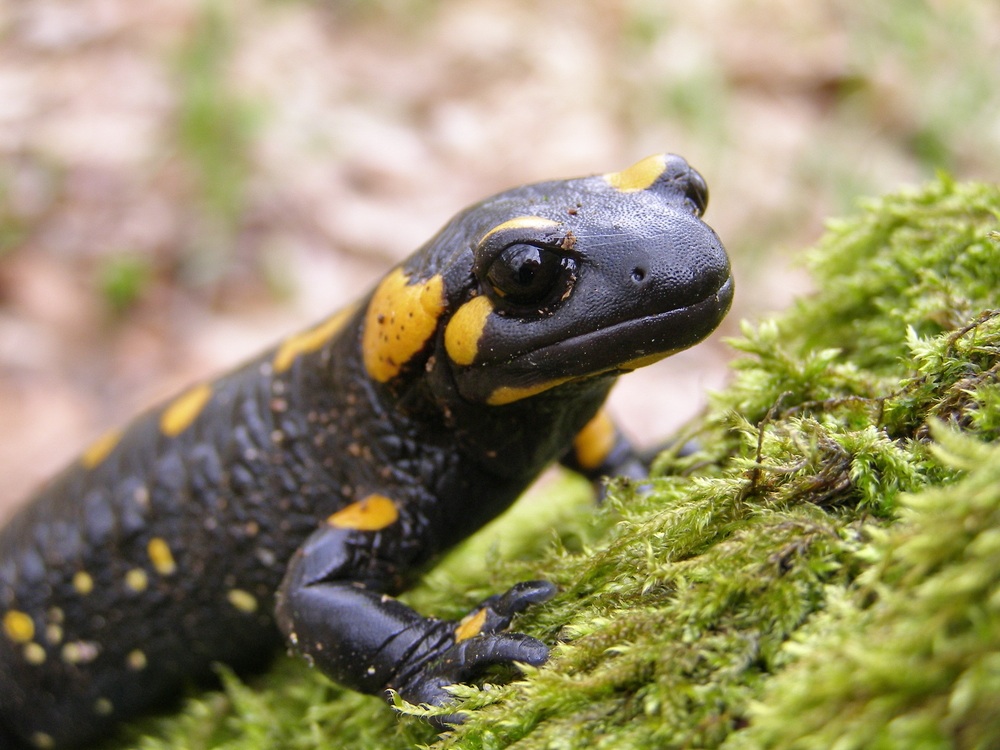
It is not always easy to distinguish between salamanders and newts, with the crocodile newt (Tylotriton verrucosus) for example also being known as the mandarin salamander. As a general guide though, salamanders tend to spend more time on land than in water, compared with newts. Being amphibians however, they are still tied to moist areas, with many species occurring in temperate regions, and particularly in North America.
Salamanders can be divided into two groups, with the family Cryptobranchidae comprised of two giant species, which can reach up to 2m (6.5ft) long, found in Japan and China, plus the bizarre North American hellbender (Cryptobranchus alleganiensis), which is also dull in coloration, being predominantly brownish.
In contrast, the widely-kept members of the family Salamandridae are much more colourful, but therein lies a warning. Like many other amphibians, fire salamanders (Salamandra salamandra) (above) have a toxic skin secretion, with their bright coloration serving as a warning to would-be predators. As is common in the case of salamanders, there is considerable variation in appearance between individuals of this species, with some being much more brightly coloured than others.
Yellow stripes rather than discrete yellow spots can be seen in the case of certain individuals. On occasions, some fire salamanders even show orange or reddish rather than yellow markings, although captive-breeding suggests this is not a geographical variant, since such salamanders do crop up in spawnings alongside the more usual yellow form.
The adult size of fire salamanders also differs greatly, reflecting their wide range in the wild, from central and southern parts of Europe south to Africa and eastwards into Asia. They can measure up to 25cm (10in) in length, with approximately 13 different races being discernible through their wide range.
Housing
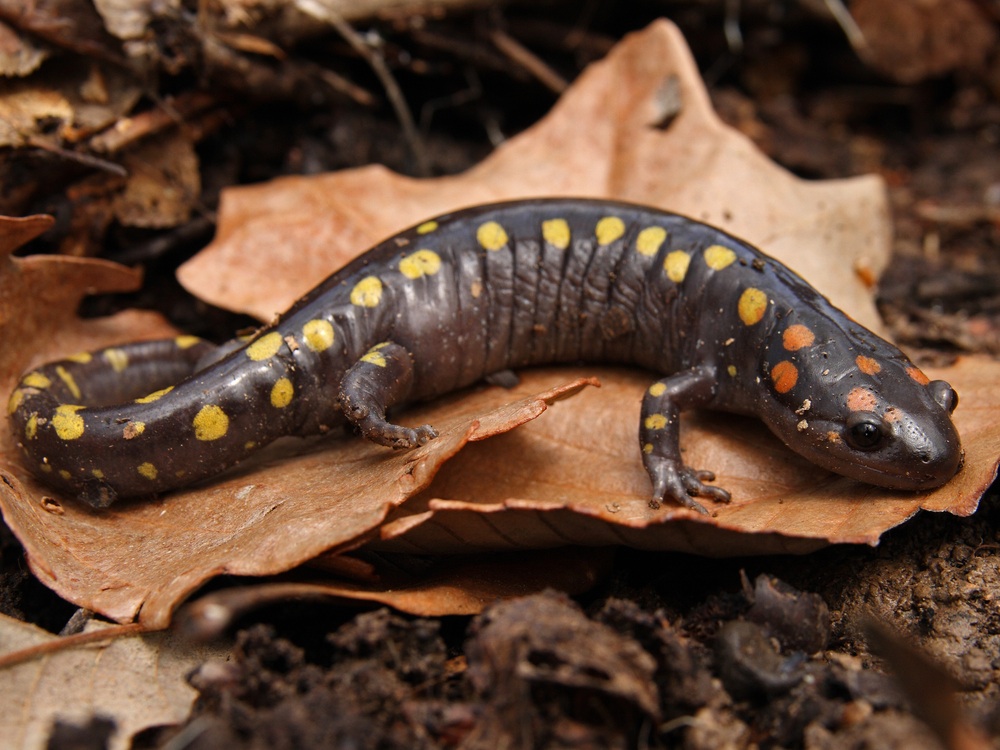
As amphibians, salamanders require moist and relatively cool surroundings, to the extent that they can be housed outdoors in secure, sheltered accommodation during the summer months in temperate areas. Alternatively, they can be kept in a vivarium or a converted aquarium with a ventilated hood.
The floor covering can consist of bark, with areas of moss, which must be kept moist by daily spraying. A suitable area of water also needs to be provided, by setting a shallow water container into the base covering. An old log, and an upturned flowerpot are also to be recommended as retreats, as well as leaves, since salamanders tend to be rather shy creatures, often proving to be nocturnal in their habits. For lighting purposes, a low wattage fluorescent tube is to be recommended.
Depending on the species and the ambient room temperature, additional heating is unlikely to be required, since most salamanders being of temperate origins. These amphibians will not generally thrive at high temperatures much in excess of 21°C (70°F). When heat is required, the best source will be a heat mat placed under part of their quarters, with a thermostatic control, rather than a suspended heat lamp.
General care and feeding
It is vital to keep the salamanders' accommodation well-ventilated at all times, to minimise the risk of moulds developing, which could endanger their health. The water should also be changed regularly as well, and dechlorinated, using a water conditioner as a safeguard against poisoning them. Products for this purpose are widely-sold for tropical fish.
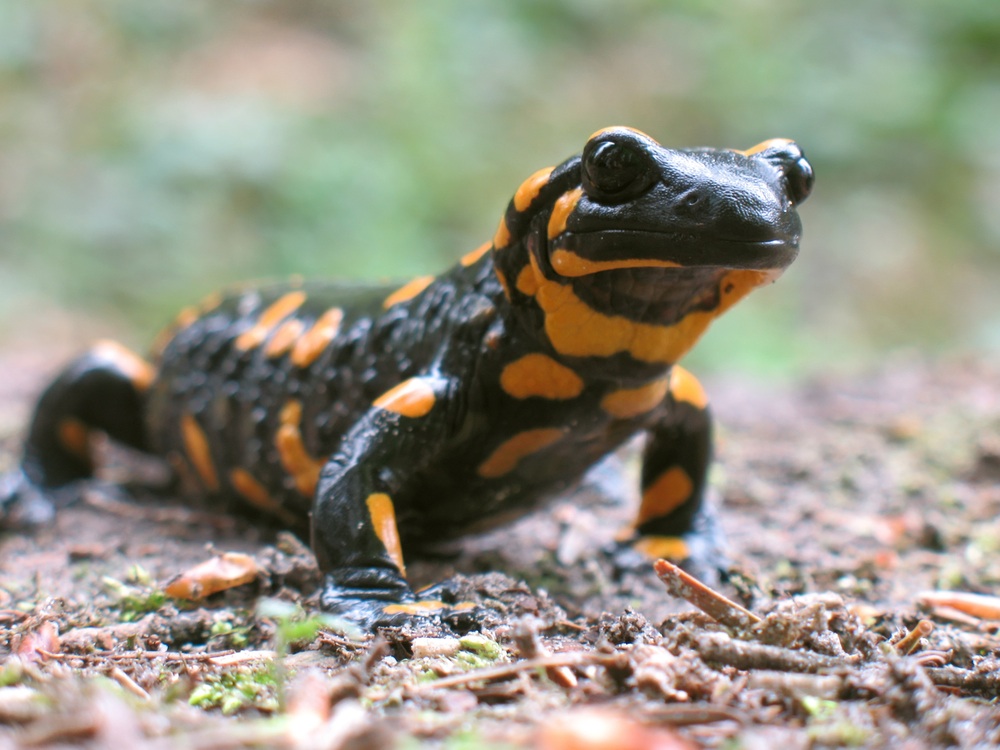
When purchasing salamanders, check their body condition, and look for any superficial injuries, around the snout and mouth in particular, which could become infected by fungus. Only handle them with moist gloved hands, as a means of reducing the likelihood of causing any skin damage, as well as protecting yourself from their secretions.
Feeding is straightforward, since these amphibians will take a variety of invertebrate prey, with worms and even slugs being favoured. Only collect such livefoods from areas where pesticides will not have been used - you can in fact buy suitable cultured worms from livefood suppliers, and these can be stored for weeks in the containers in which they are sold.
You can also offer other commercially-available invertebrates, including waxmoth larvae. Dusting the salamanders' food with a special vitamin and mineral supplement is to be recommended. It is also important to match the size of the prey to that of the salamander. Larger salamanders may even eat pinkies (dead day-old mice, sold by specialist herptile suppliers).
Conditioning and breeding
In the winter, salamanders will benefit from being kept at a lower temperature, typically about 5°C (41°F) for the course of several weeks, assuming that they have been well-fed over the summer months. They will be less active through this period, mimicking their natural environment. Although obviously, differences in coloration are not reliable, sexing when they are in breeding condition is relatively straightforward. Males have a more swollen cloacal opening compared with females, and generally display a slimmer profile in spring.
Water is of increased significance at this stage, since mating often takes place in aquatic surroundings. You may want to transfer the salamanders to a container where the area of shallow water can be extended, with the tank itself being partitioned, creating a reduced area of dry land.
The female collects the packet of sperm, known as a spermatophore, released by the male, and takes this into her cloacal opening. The eggs, ranging from 25 to 100 or more depending partly on the species, are often laid in water weed such as Elodea. Alternatively, young larvae may be deposited directly into the water in the case of some species or even particular populations.
Easy access into and out of the water is essential, both for the adults and also their offspring in due course. Eggs may take two months to hatch, depending on the species and water temperature. It will then be another four months before the larvae complete their metamorphosis into young salamanders and emerge on to land. Small livefoods ranging from wingless fruitflies (Drosophila) and whiteworms (Enchytraeus albidus) to lesser waxmoth (Galleria mellonella) will be essential through the rearing period.
Variations on a theme
The biology of salamanders is actually very varied. In the case of the axolotl (Ambystoma mexicanum), it may spend its entire life in the immature larval stage of its lifecycle, and even reproduce in this state, rather than developing into a mature salamander. On the other hand, some female salamanders actually produce miniature offspring rather than eggs or larvae. This behaviour is especially common in populations living at higher altitudes, in the Alps for example. The climbing salamanders (Aneides species) from North America breed not in water, but in tree hollows.
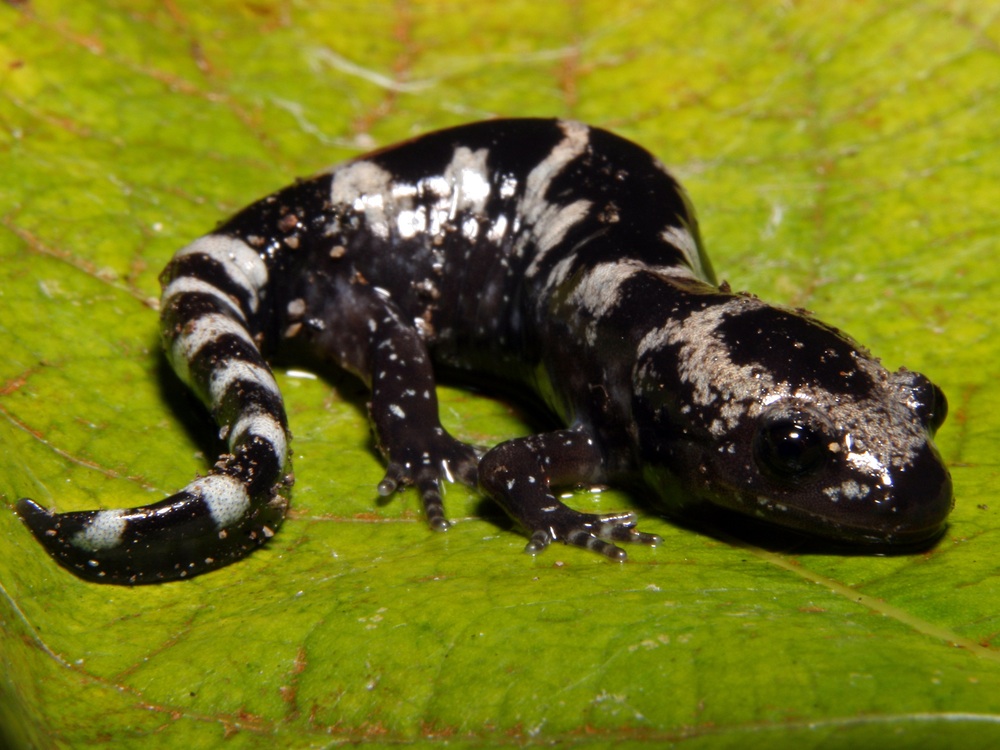
The attractive marbled salamander (Ambystoma opacum) (above) differs from many species in that the female collects the male's spermatophore on dry land in the autumn rather than in water during the spring. The eggs in this case can even develop on land, with the young salamanders emerging about 5 months later.
Like a number of other salamanders, the female marbled stays with her eggs, watching over them until they hatch. Young of this species lack the distinctive silvery-grey markings of adults at first, being brownish in colour when they emerge on to land. They can grow up to 11.5cm (4.5in) long.
The salamanders forming the plethodontid family are often described as lungless salamanders, because they breathe through their skins. They also tend to breed on land, rather than in the water. Unfortunately, it is often not easy to identify them, and so when starting out, it is preferable to purchase a small group if possible, because otherwise, it will be difficult to obtain stock of the same species in the future.
As an example of the scientific confusion surrounding members of this group, the slimy salamander which was previously regarded as a single species under the name of Plethodon glutinosus is now considered to be comprised of thirteen distinctive species! They all look exceedingly similar in appearance, although they can be distinguished on the basis of genetical studies.
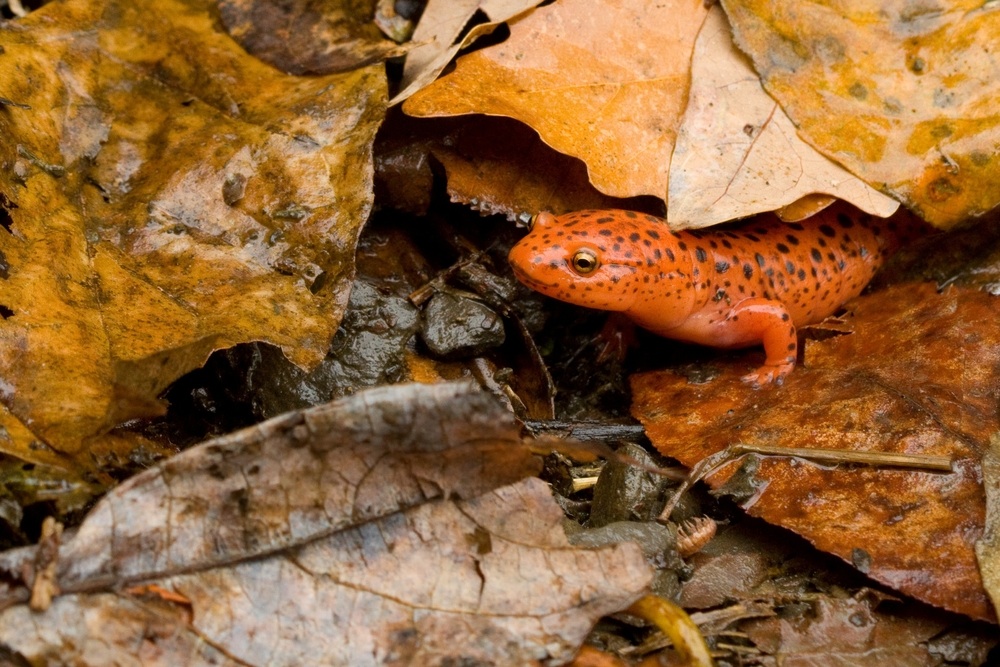
One of the most strikingly colourful of all salamanders is the red salamander (Pseudotriton ruber) (above). It prefers areas of clean flowing water, and so the addition of a small filter is to be recommended, with the adjacent land area also being kept moist. Red salamanders are widely-distributed through the USA, to the east of the Mississippi River, although they are absent from Florida and the southern coastal areas.
Unlike most lungless salamanders, they do return to water to breed after hibernation. Flowing water, circulating via a pump, is an important trigger for this purpose. Be prepared to be patient with red salamanders however, because the larvae may remain in their immature aquatic state until their second or even third year. By way of compensation however, these and other salamanders have a long life, with recorded lifespans of 15-20 years or even longer in some cases. The young are typically mature by four years of age.
If you are limited for space and yet particularly interested in observing the natural world, salamanders are an excellent choice. They are shy by nature, but they can often be persuaded to breed successfully as well, adding to the fascination of keeping them.